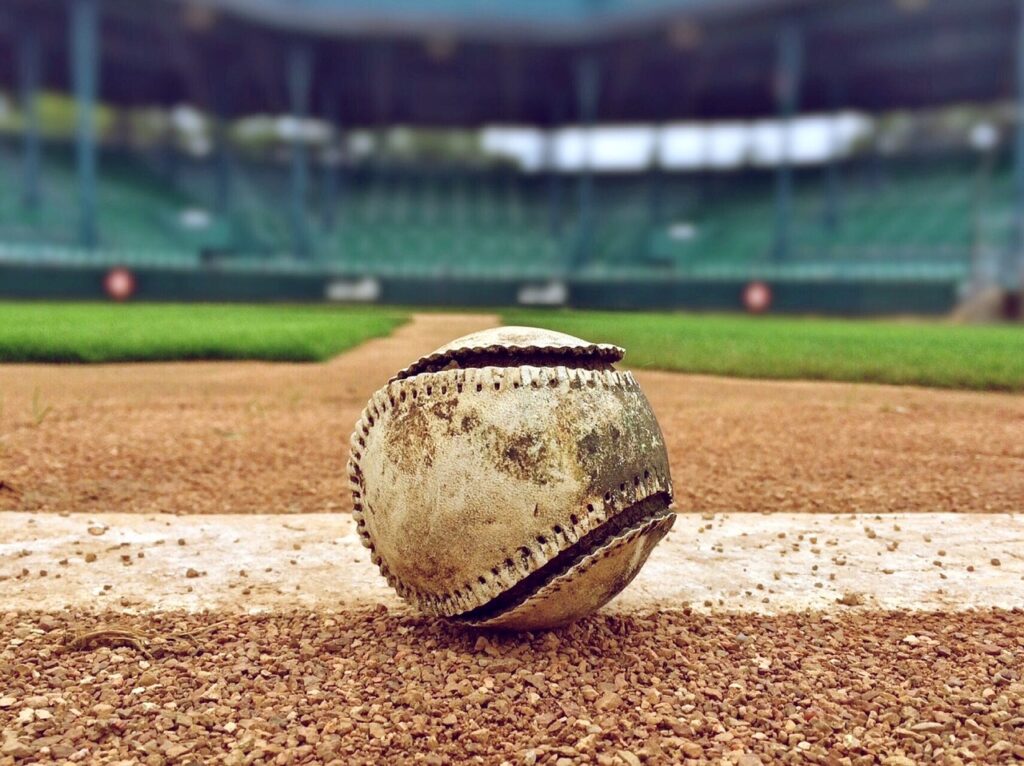Baseball is the second-most popular sport in the US, bettered only by football. It’s becoming more popular with viewers; both Fox and ESPN experienced double-digit growth in their recent broadcasts of the opening weekend. It’s a sporting juggernaut showing no signs of slowing, but like many sports, it does have a somewhat chequered past.
Alongside its storied history, baseball also carries a shadowy legacy: tobacco. For decades, tobacco and baseball shared a close relationship that transcended mere sponsorship deals and advertising campaigns. This relationship, born in the sport’s early days, flourished for generations before being gradually phased out. As tobacco has seen a rapid decline in popularity across the country, baseball has followed suit.
However, it is worth examining the origins of tobacco use in baseball, its pervasive influence, and its eventual decline.
Tobacco in baseball
Tobacco’s association with baseball traces back to the sport’s beginnings in the 19th century. As baseball gained popularity, so did the practice of chewing and spitting tobacco among players. Initially, tobacco served practical purposes, such as relieving stress and providing energy during long games. However, its presence soon became deeply ingrained in baseball culture, with players often seen with bulging cheeks and spitting copious amounts of tobacco juice onto the field.
The relationship between baseball and tobacco took a significant turn in the early 20th century with the rise of mass marketing and sponsorship. Tobacco companies recognized the sport’s appeal and began capitalizing on it to promote their products. Brands like Camel and Lucky Strike became synonymous with baseball, plastering stadiums with advertisements and sponsoring players and teams. Tobacco’s tentacles extended beyond the ballpark, infiltrating baseball cards, magazines, and radio broadcasts.
One of the most iconic images of this era is the sight of baseball legends like Babe Ruth and Joe DiMaggio endorsing tobacco products. Their celebrity status served as a powerful marketing tool: the romanticized image of the rugged, tobacco-chewing ballplayer became ingrained in American culture, perpetuating the myth of tobacco’s link to athleticism and masculinity.
Waning influence
Tobacco’s influence in baseball began to wane in the latter half of the 20th century, driven by shifting societal attitudes and mounting health concerns. The Surgeon General’s landmark report in 1964 linking tobacco use to lung cancer marked a turning point in public perception. As awareness of the health risks associated with tobacco grew, so too did calls for its removal from the game.
Efforts to curtail tobacco use in baseball gained momentum in the 1980s and 1990s, driven by advocacy groups, public health campaigns, and league initiatives. Baseball took steps to restrict tobacco use among players, banning its advertising on team uniforms and in stadiums. Additionally, the league prohibited tobacco companies from distributing free samples or sponsoring youth-oriented events.
The 21st century witnessed a further push to eliminate tobacco from baseball once and for all. In 2016, MLB and the MLB Players Association reached a historic agreement to ban smokeless tobacco use among players during games—a significant step toward creating a tobacco-free environment in baseball. The ban, implemented as part of the league’s collective bargaining agreement, reflected a growing consensus within the baseball community about prioritizing player health and setting a positive example for fans, particularly young ones.
Awareness campaigns, education initiatives, and stricter enforcement of tobacco policies have all contributed to a gradual decline in tobacco use across the sport. It is also reflective of society and the evolving cultural landscape, coupled with increased scrutiny of tobacco’s impact on public health, which has helped erode its once-unquestioned association with baseball.
Alternatives
The allure of tobacco persisted among fans, with some nostalgia for the days when chewing tobacco was synonymous with baseball. Also, as some may still require nicotine for play, there are options available that tick two boxes: tobacco-free but an oral delivery of nicotine—one of the most obvious in nicotine gum from manufacturers such as Nicorette. This is a gum that can be chewed in the same manner as the old chewing tobacco but without the actual tobacco. Often, it comes in different flavors and strengths, with mint one of the more popular flavors on the market.
There’s also been a rise in the use of nicotine pouches, with brands such as LUCY and On! becoming hugely popular across the country. However, the ZYN brand of pouches has become the most popular in MLB. These are small white pouches that sit between the lip and gum, delivering nicotine for up to an hour. They’re not chewed but come in different flavors and strengths. There are ZYN wintergreen pouches, which are minty and a good alternative to chewing tobacco. They are middle-of-the-road, 6 mg in strength. Again, like gum, pouches are flexible, with other flavors such as citrus and cherry, and strong pouches are available for heavier former tobacco users.
Conclusion
As baseball continues to adapt to changing societal norms and public health imperatives, the legacy of tobacco in the sport serves as a cautionary tale. While its use may be slowly throttled out of the game, the enduring legacy of tobacco in baseball reminds us of the power of commercial interests and public health advocacy in shaping US sports.

